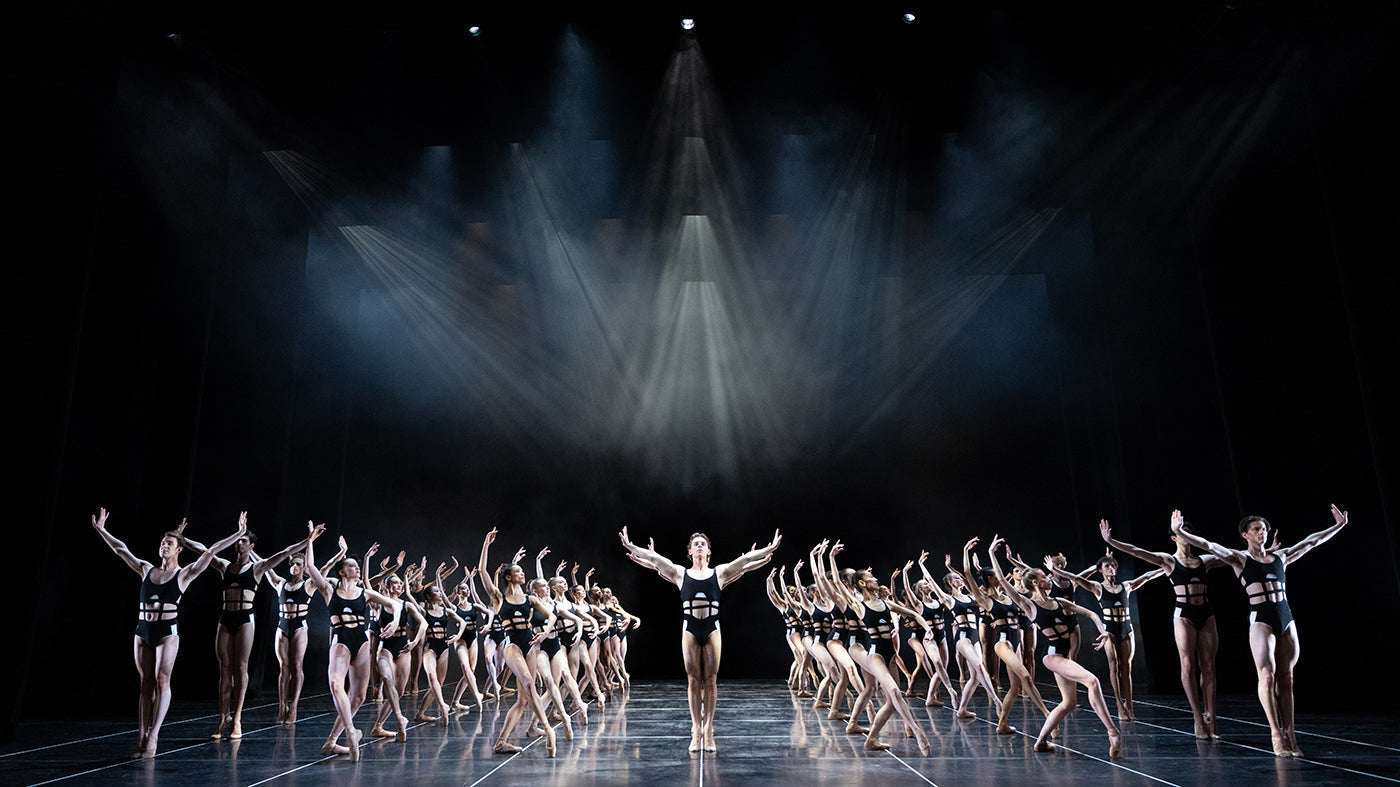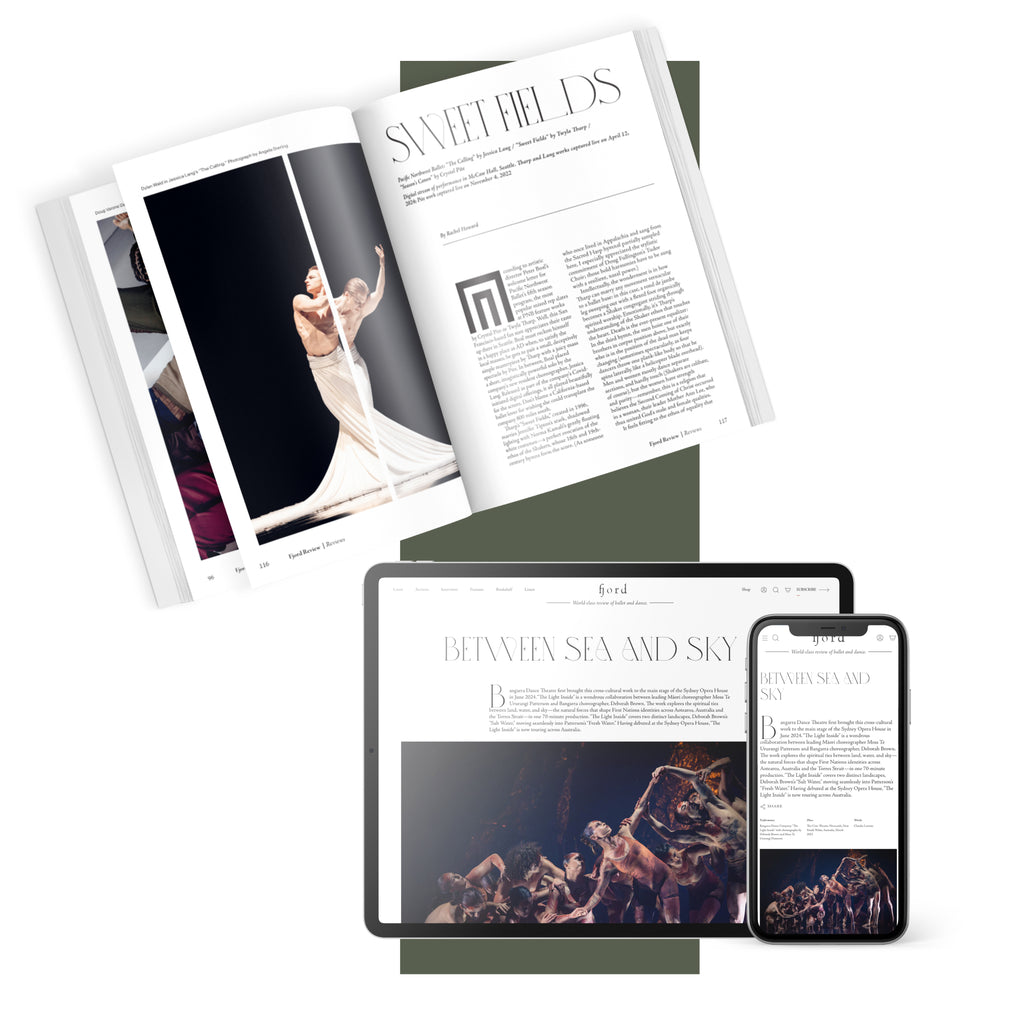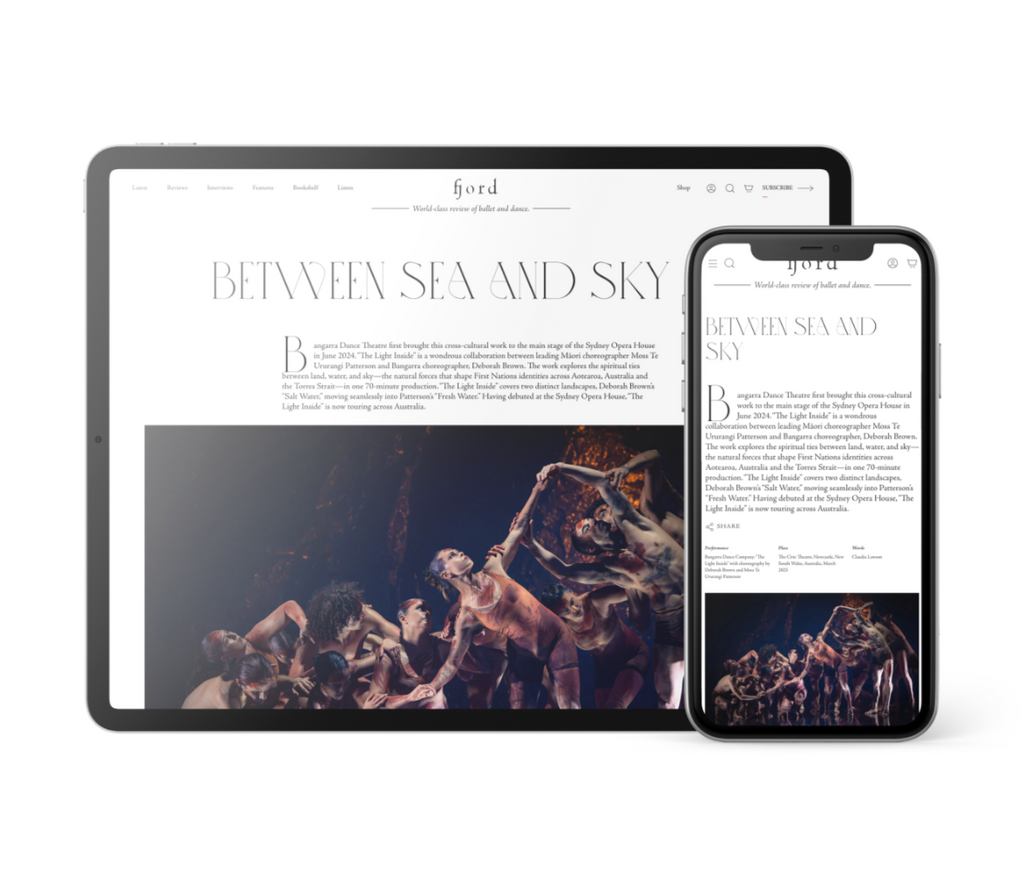Mishima’s Muse
Japan Society’s Yukio Mishima centennial series culminated with “Mishima’s Muse – Noh Theater,” which was actually three programs of traditional noh works that Japanese author Yukio Mishima adapted into modern plays.
Continue Reading
World-class review of ballet and dance.
Programming, like staging and choreography, is an art, and Ángel Corella surpassed himself with all three in this early spring show featuring all new works. Since its inception in the early ’60s Philadelphia Ballet (then Pennsylvania Ballet) has been a Balanchine-influenced company. The costuming of all three works on this program reminded me of Mr. B’s black and white ballets, directing the eye to focus on the movement rather than the costumes or set design. Corella fashioned this program to highlight his own choreography, the world premiere of his ballet to Ravel’s Boléro. Subtly, like Ravel’s score, he built the entire program from slow and airy, to mid-tempo to its subito crescendo.
Performance
Place
Words



“Uncommonly intelligent, substantial coverage.”
Your weekly source for world-class dance reviews, interviews, articles, and more.
Already a paid subscriber? Login

Japan Society’s Yukio Mishima centennial series culminated with “Mishima’s Muse – Noh Theater,” which was actually three programs of traditional noh works that Japanese author Yukio Mishima adapted into modern plays.
Continue ReadingThroughout the year, our critics attend hundreds of dance performances, whether onsite, outdoors, or on the proscenium stage, around the world.
Continue ReadingOn December 11th, the Alvin Ailey American Dance Theater presented two premieres and two dances that had premiered just a week prior.
Continue ReadingThe “Contrastes” evening is one of the Paris Opéra Ballet’s increasingly frequent ventures into non-classical choreographic territory.
Continue Reading
comments